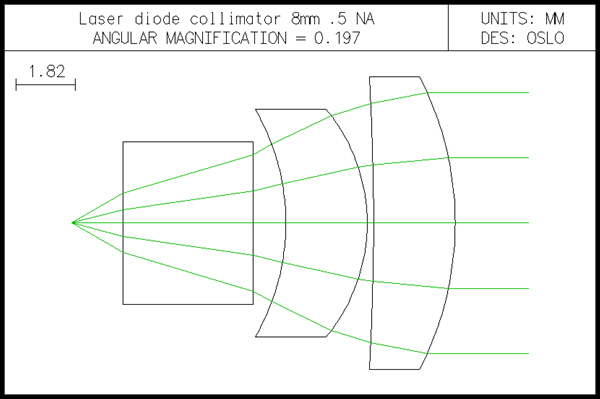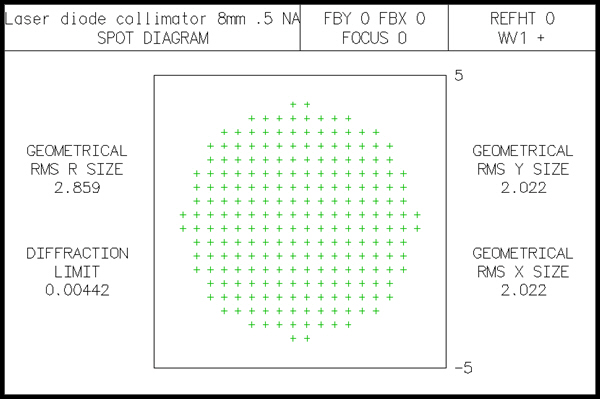Written by Admin | Aug 30, 2021 4:00:00 AM
Diodcoll shows a practical lens in which the difference between aplanatic and paraxial ray aiming is clearly visible. Paraxial ray aiming is used in many optical design programs, but it does not provide a good model for systems that have a large numerical aperture on the object side. Aplanatic ray aiming is based on the canonical coordinates introduced by H.H. Hopkins, and is generally more accurate for these systems. The optical system itself is a commercial design available from Melles Griot, used to collimate diode laser beams.�This lens is designed to take light from a laser diode and produce a collimated beam. It is a commercially available design available from Melles Griot as their part number 06GLC002. It is designed for a numerical aperture of 0.5 on the short conjugate side, and has a focal length of about 8mm.


Paraxial ray aiming: